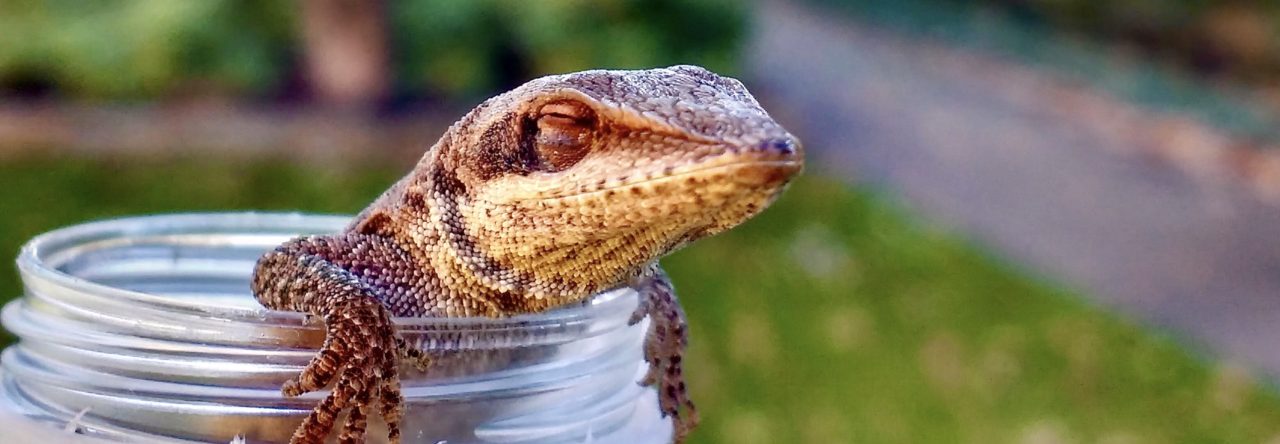From the recent ISBE Newsletter (28:2, p.26).
The artist, Ken Otter, who when not drawing is a professor at the University of Northern British Columbia, explains the back-story:
My first love was reptiles – birds came as a later incarnation (although I console myself that they are simply feathered reptiles). I was actually planning on shifting to working on anoles during my postdoc. I have had numerous ones as pets over the years – my students gave me a brown anole that became our lab mascot for about 5 years. I even had an undergrad student at the University of Nottingham that I was co-supervising with Pete McGregor run trials to see if males eavesdrop on dewlap displays of other males. Unfortunately, the student was primarily focused on nature photography, and we had a miscommunication on scientific design. I found out after the fact that he hadn’t quite followed protocol, so we couldn’t count all our trials, so the results were only ever presented in a conference poster and not published. He ended up as a photographer for BBC Wildlife though!
I had actually been awarded a short-term postdoc back in the 90s from the Association for the Study of Animal Behaviour to test anole signalling behaviour using video playback systems (very similar to the stuff that has since been done using Robo-lizards). Unfortunately, it came at the same time as I was offered a tenure track job here, and the University had a ‘northern research focus’ so wasn’t too keen on me heading off to the Caribbean to do field work. Guess now that I have full professorship I could always tell them to stuff themselves, but I have my research program set up now! Still find dewlap displaying fascinating, especially with the added component of UV signalling in the mix. That aspect parallels a lot of the stuff with bird signalling. The fact that males are in such close proximity and can see at least silhouettes of others displaying give a certain network component that Pete and I were always interested in pursuing, but just never go around to it. Still occupies my thoughts (hence the cartoons) and talk about it in my lectures, but guess I will have to wait to put it into field practice! Still, next North American Ornithological Congress in 2020 is being held in Puerto Rico….
And here’s another of his drawings:






















